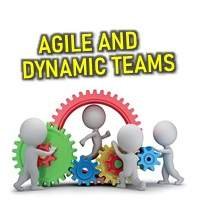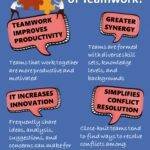
The Agile and Dynamic Teams Activity
Agile and Dynamic Teams is an energetic and fun game to develop active listening, coordination and concentration.
Divide your group into small teams of four people. Each team stands in one straight line with hands on the shoulders of the person in front of them.
The person at the front of the line is member 1, the person behind iscmember 2, and so on. As best as possible, ask everyone to face towards you to make it easier to be seen and heard.
In a highly competitive environment, each team will be challenged to respond as quickly and accurately as possible. Explain that you want each team to respond immediately to a series of three commands:
- “CHANGE” – member #1 moves to the back (and becomes #4;)
- “SWITCH” – members #2 and #4 switch places
- “ROTATE” – every team member rotates their orientation 180 degrees (#4 becomes the new #1)
All moves must be completed as accurately and as fast as possible. Introduce and practice one command at a time until everyone is familiar with all three commands.
Play one 30 second round, and then give each team 2 minutes to refine their Change-Switch-Rotate routines.
Play a second round featuring a lot of fast commands to test each team’s ability.
Then play a second round, during which you are encouraged to speed up the pace of your calls, and announce a series of potentially confusing string of commands. For example, “CHANGE, CHANGE, SWITCH, ROTATE, CHANGE, SWITCH, ROTATE, SWITCH, SWITCH, CHANGE….” etc.
Play a third and final round, introducing a new, fourth command:
- “TWISTER” – everyone scatters and forms a part of a new four-person.
As the last few people jump into their new team, quickly resume your commands – don’t wait for everyone to be ready, because you will lose a lot of momentum. Continue playing until your team’s energy runs out or enthusiasm begins to wane.
Moment of Reflection
- What helped you respond successfully to the series of commands?
- What obstacles did you encounter which made it difficult to respond accurately?
- What skills did you need to act with efficiency and precision? What skills did the team need to act quickly?
- What leadership lessons could we learn from this exercise?
The topics of this publication: interactions, strategy, collaboration, leadership, teamwork, cooperation, integration, adaptability skills, adaptation, active listening, foster relationships, motivation, disinhibition, distension


